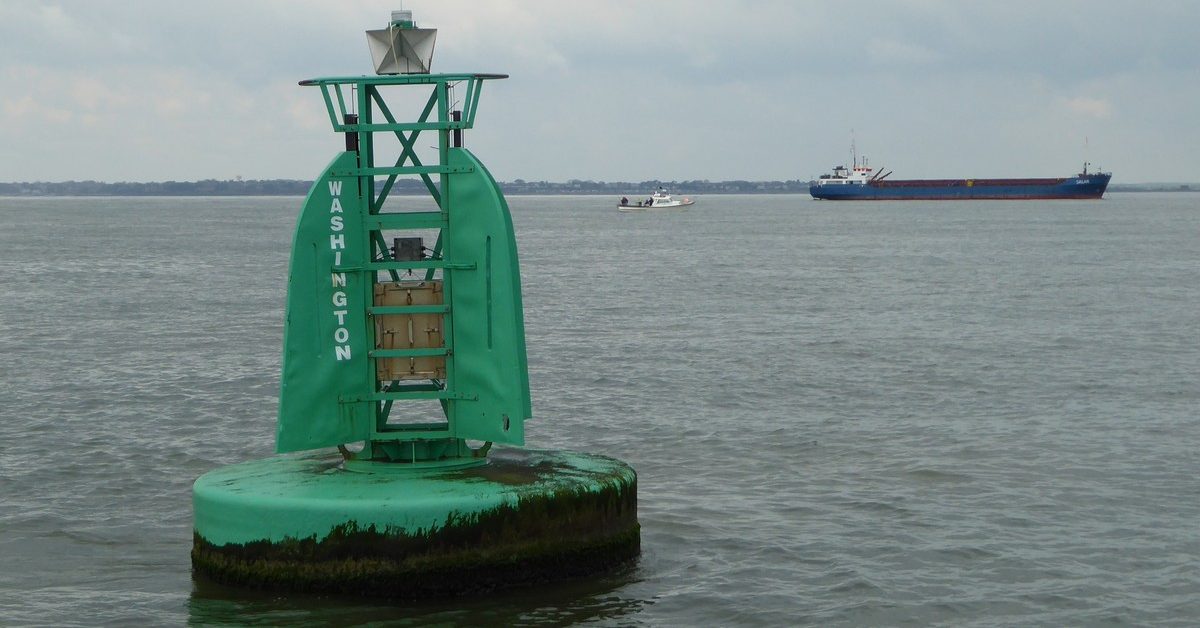Boy to Man to Buoy
Some know of Captain John Washington as an important figure in the history of the Haven. However, the work on the port was a tiny part of what he achieved: he was a sailor, explorer, cartographer, hydrographer, linguist, humanitarian, scientist, spy and engineer.
A starboard hand buoy off Harwich named for him leads to the tale of an exciting, busy and worthwhile life. When there is time a shorter account may be written or perhaps a video presentation but, for now, there is much to tell…
Contents
- Boy to Man to Buoy
- Early Life
- Midshipman
- To War against America
- Greenland
- Naval College and Gold Prize
- Second American Posting
- Trekking Home across South America
- Lieutenant and a Third American Posting
- England, Travel and Hydrography
- First Lieutenant, Mediterranean and Injury
- Morocco
- Flag Lieutenant
- Marriage
- Men of science
- Commander and RGS Secretary
- Anti Slavery
- The Hydrographic Office
- Shipwreck and Back to Sea
- Charts and Tides
- The King of Prussia
- Captain, FRS and HMS Blazer
- Saviour of Harwich Haven
- The North West Passage
- The Eskimo Vocabulary
- Famine and Fisheries
- Lifeboats
- The Baltic
- Assistant Hydrographer
- Admiralty Hydrographer
- Assisting David Livingstone
- The Cedars of Lebanon
- Rear Admiral
- Despair and Exhaustion
- Just a Buoy
- Questions and Notes
Early Life
John Washington was born on January 1st, 1800, by most accounts, at Crondall in Hampshire1His Place of birth was, according to Armand d’ Avezac, a close friend later in life, at Odiham, five miles distant. The family was living at Crondall when his father died . His father was the forty-nine year old Reverend John Washington Rector of Odiham and Chaplain to the Bishop of Winchester. King George the Third was on the throne and Britain was at war with Spain and France.
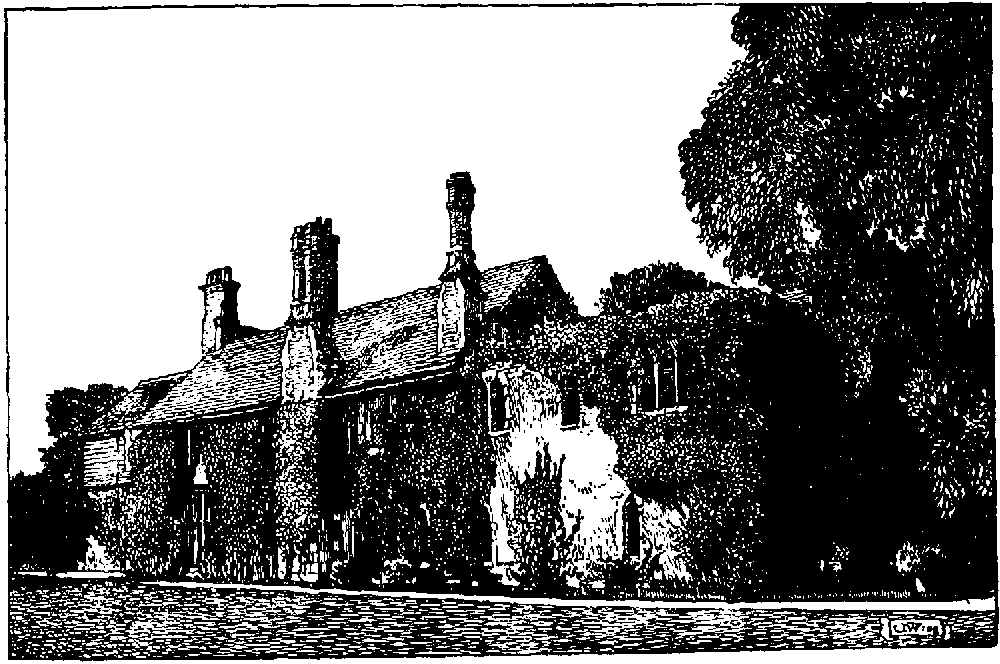
Graeme Spence and the Haven
Around this time, Harwich, which was to figure in John Washington’s later life, was being expertly surveyed by Graeme Spence who was the man soon to guide Nelson’s Medusa through the channel of the same name.
John was the second child with three brothers and three sisters, one of each died whilst he was still young. He attended Hyde Abbey School in Winchester which produced, in its short existence, two prime ministers and several bishops. John may have been destined for a career in the Church. He would have learned Latin, Greek and some Mathematics.
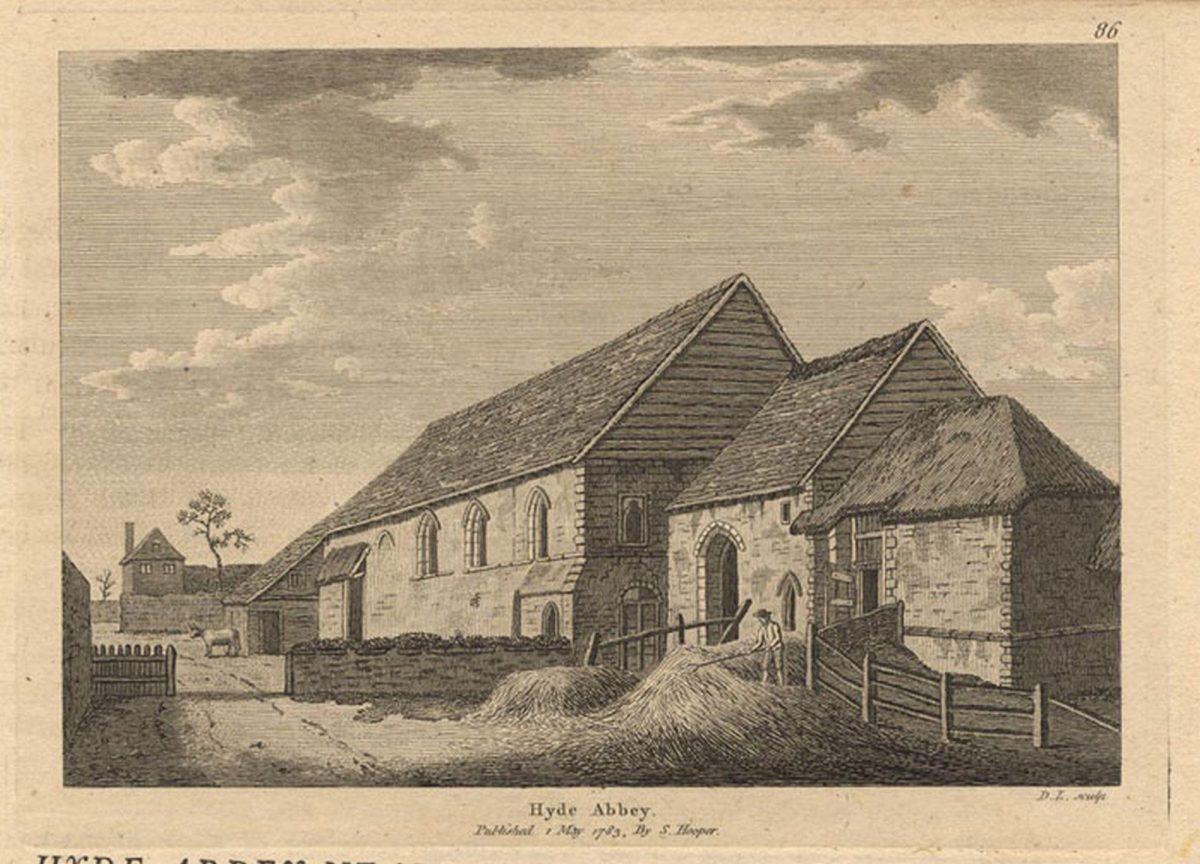
drawn 1780, engraved by DL, published by S Hooper, 1783. (Credit: HAMPSHIRE CULTURAL TRUST)
The death of his father in February 1812 curtailed schooling and, he entered the Royal Navy in May 1812 as a first-class volunteer or midshipman. His date of birth makes it easy to see that he was just twelve years old at this point.
The polar explorer James Clark Ross had joined the Navy just one month earlier. Francis Beaufort, who later was a major influence on the Navy and Science was, at this time, a Captain mapping Karamania, now Southern Turkey, having had an active career helping to defeat Napoleon at sea.
The key development in the Harwich area at the time was the start of large-scale Cement Stone mining which was to create problems for Washington later on.
Midshipman
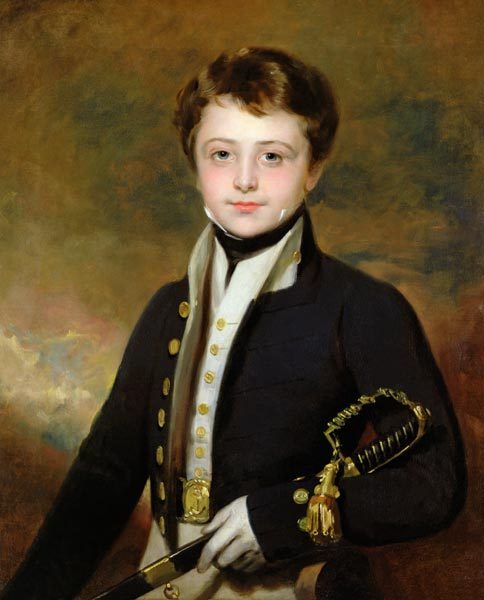
(contemporary but not actually Washington) Credit:Beat to Quarters
After the Battle of Trafalgar in 1805, the Navy was contracting and there was a shortage of positions, from 1812 the fleet would be cut by nearly eighty per cent over five years2‘British Warships in the Age of Sail 1793-1817: Design, Construction, Careers and Fates: Winfield, Rif’. . Regulations were that young gentlemen could not enter the service before the age of thirteen3Cavell, Samantha. ‘A Social History of Midshipmen and Quarterdeck Boys in the Royal Navy, 1761-1831 .
So, this post would have entailed the exercise of influence. There do not seem to be any naval relatives so the most likely source would be the bishop who was well-connected and perhaps felt an obligation to his late Chaplain’s son.
To War against America
Washington’s first berth was with Captain James Saunders on HMS Junon, a captured French frigate. Soon after setting sail, they took as prize a French cutter west of the Scillies.
By September they had reached the Chesapeake Bay area and, in November, Admiral Cockburn took over the squadron. His mission was:
“…to rough up the Americans … torching any homes construed as being supportive of the militia … promoting fear and hatred”.
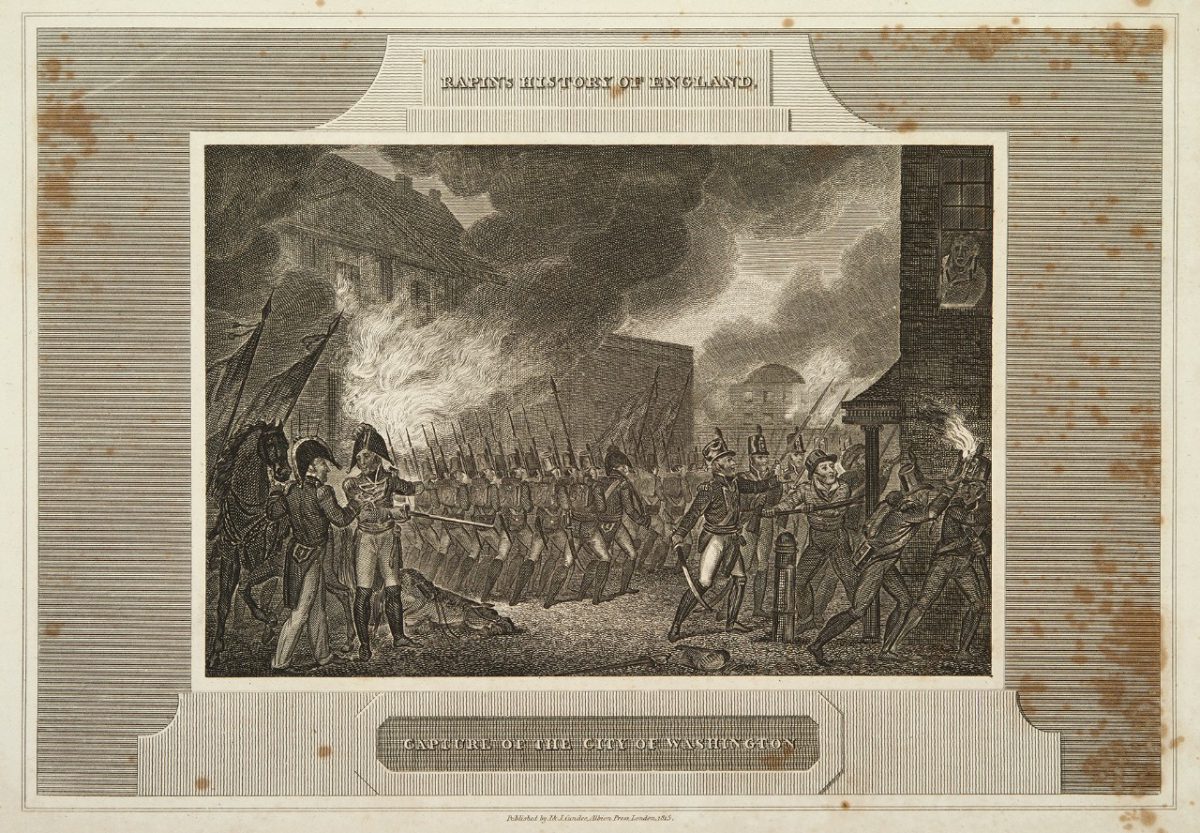
A little later, in 1814, Admiral Cockburn set fire to buildings in Washington, including the White House and the home of the American Commodore Rodgers. By current standards, this seems excessive for a family squabble and unlikely to win hearts and minds.

HMS Junon captured several more prizes and saw close action; in June 1813 she was attacked by fifteen American gunboats at the entrance to the Norfolk River (Virginia). Due to the shallow water, Junon was unsupported during an action lasting three hours and lost two killed and three wounded. Several of the enemy were disabled and their whole force was obliged to retreat4HMS Junon actions from Age of Nelson . The American account of the action is rather different.
Captain Saunders commended Washington with the comment:
“That he showed in the fire the same ease as in a living room.”
Captain Saunders
Nearby, in the same month, Captain Philip Broke, of the Shannon and Broke Hall on the Orwell, defeated and captured the USS Chesapeake in what became a famous action.
Greenland
By October 1813 Washington transferred with Captain Saunders to HMS Sybille. The Master of the ship was William Bain who was of a scientific disposition. At the beginning of 1814, Captain Thomas Forrest took over command. They sailed to Greenland and later Spitzbergen, possibly in a fruitless pursuit of Commodore Rodgers, but also in protection of the whaling fleet.
William Bain took Washington under his wing and charged the young midshipman with making an extensive series of observations of both magnetic declination and deviation. These were important and not well understood problems at the time and Bain went on to write an influential 1817 book on the subject which included Washington’s work5Bain – An essay on the variation of the compass . This voyage would also have been when Washington made his first acquaintance with the dialects of the Eskimo6Inuit or Eskimo: Which name to use? language. Then back to England.
Naval College and Gold Prize

After two years learning the ropes at sea, in November 1814 Washington entered Royal Naval College Portsmouth. It appears to have improved since 1801 when Lord St Vincent regarded the place as,
‘a sink of vice and abomination, which ought to be abolished’.7‘a sink of vice and abomination, which ought to be abolished’. – Lloyd, Christopher. ‘The Royal Naval Colleges at Portsmouth and Greenwich’. The Mariner’s Mirror 52, no. 2 (1 January 1966): 145–56.
Lord St Vincent
The headmaster who had improved things was the Reverend James Inman who had served as astronomer under Flinders in HMS Investigator in 1803. He provides a link back to Captain James Cook with whom Flinders had served. Inman would certainly have taught Washington Mathematics and Nautical Astronomy and was soon to publish his Nautical Tables8Inman’s Nautical Tables, Designed for the Use of British Seamen .
Washington would also have developed his draughtsmanship as did an earlier, Suffolk, student, Phillip De Vere Broke (‘of the Shannon’ as above). Inman later established the gunnery school and passed his passion for guns to Broke. The College had seventy places and Washington won the 1816 Gold Prize as best student. Two years later Robert Fitzroy was to come to the school.
Second American Posting
After about eighteen months at college, in May 1816 Washington joined HMS Forth at Chatham. He was destined for three years on the North American station, then into the Pacific in HMS Vengeur (74), a Harwich ship from Graham’s yard, and next into HMS Superb (74).
Whilst a midshipman, during a night manoeuvre in the Pacific, a seaman fell from aloft, landing on Washington’s head. This broke his teeth and plunged him, unconscious, into the dark sea. He was fortunate in that a concerted recovery effort by the fleet managed to save his life. It is not recorded what happened to the seaman, but it may be that Washington, by cushioning his fall, also saved his life. This led to some home leave.

1820, by Nicolas S.Cammillieri Credit: Wikimedia
Trekking Home across South America
He obtained permission to return to England by his own route. He chose to travel overland from Valparaiso, in Chile, across the Andes and Pampas to Buenos Aires in Argentina. No account of this 1780-mile journey has been found although, as will be seen from later journeys, Washington would have written a travelogue and may also have done some mapping.
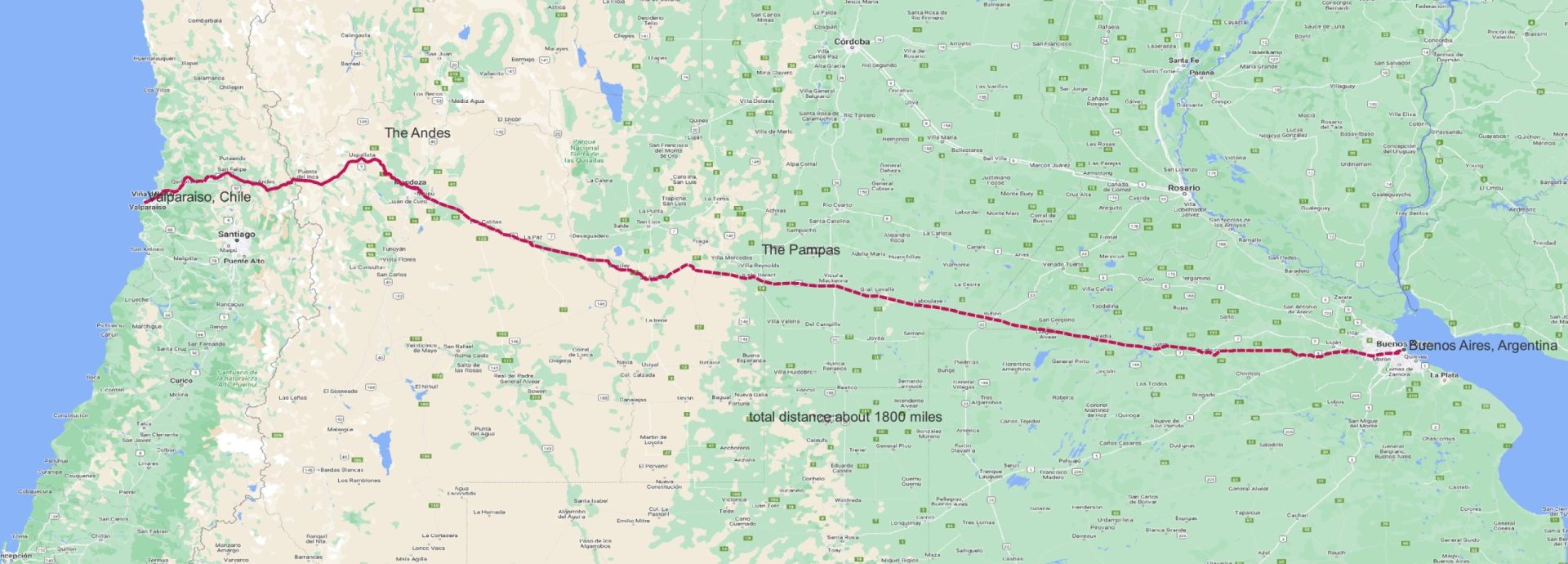
Lieutenant and a Third American Posting
On his twenty-first birthday, January 1st, 1821, he received his promotion to Lieutenant. It’s not clear what happened over the next year but by 1823 he was in the West Indies as Lieutenant on HMS Parthian. At this time the Royal Navy was suppressing the slave trade and piracy which involved boarding the ships of most other nations9John Beeler. ‘Maritime Policing and the Pax Britannica: The Royal Navy’s Anti-Slavery Patrol in the Caribbean, 1828-1848’ . Washington was to have further involvement with anti-slavery later on.

Whether he chased pirates and found severed heads on poles as in the action shown for HMS Parthian, is not known but he was in that ship near that time10According to Armand d’Avezac Washington was on Parthian from 1823 for two years which puts him on board, however, that is the only source. .
Parthian was a Cherokee class vessel like FitzRoy’s HMS Beagle. These were known as ‘Coffin Brigs’ and although Fitzroy managed two circumnavigations and survived being laid over onto his beam ends, another of the class, HMS Fairy, as we shall see later, was less fortunate.
England, Travel and Hydrography
Back to England again, maybe due to the death of his elder brother. This was followed by two years on half pay, which he used to travel in France, Spain and Italy, honing his language skills. From his earlier exploits, he had probably earned good prize money.
In 1826 he was with Commander William Hewett in HMS Protector surveying tides11Tide observations in the North Sea by Hewett on the East Coast as he remarked in a later document on tides:
I may observe that the same peculiarity is found on the Leman and Ower Shoals (where the inward fall is twelve feet at springs) as first noticed by myself in 1826, when in the Protector, with that experienced surveyor, the late lamented Captain Hewett12Leman & Owers Shoals – see Washington, John. Tide Observations – North Sea – Professor Whewell’s Theory, 1842. .
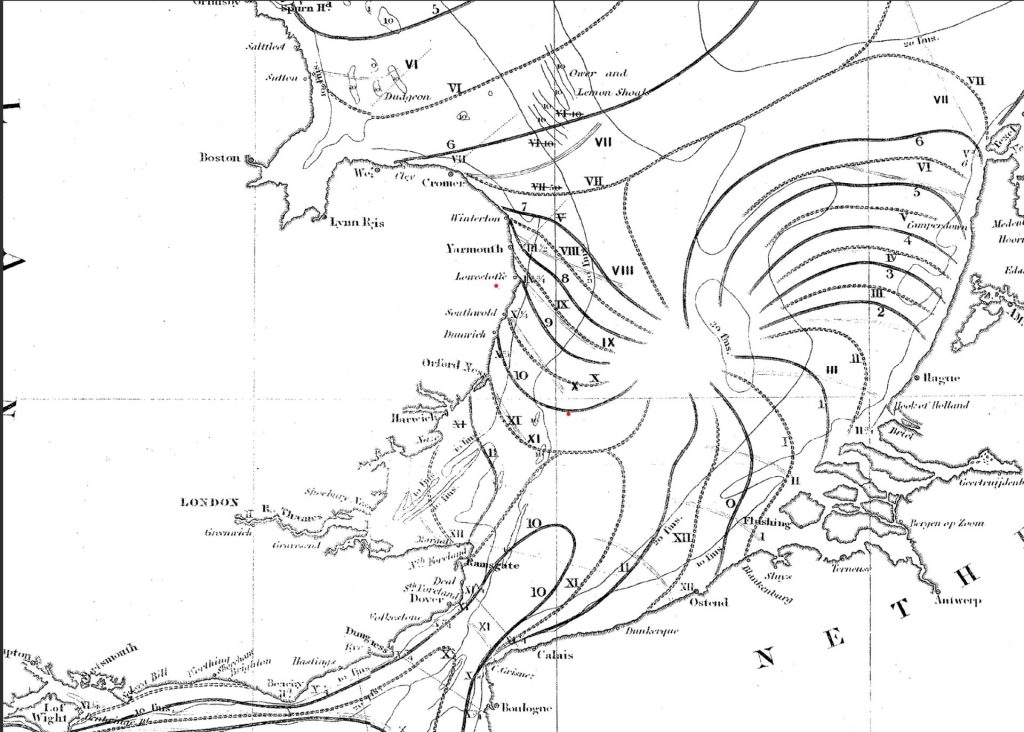
Eventually, Washington will replace Hewett in tragic circumstances. It is likely that during this voyage he visits Harwich for the first time and, much later in life, he recounts the drastic changes in depth of the harbour entrance.
This is the first mention of serious hydrography in Washington’s career. He could have been guided to it by his connections with William Bain or perhaps with James Inman at Naval College. Hewett’s work for Whewell was to lead eventually to understanding North Sea tides, amphidromic points and the development of co-tidal line charts13Whewell, William. Researches on the Tides. Sixth Series. On the Results of an Extensive System of Tide Observations Made on the Coasts of Europe and America in June 1835. Philosophical Transactions of the Royal Society of London, 1836. and Wikipedia on William Whewell.
First Lieutenant, Mediterranean and Injury
By May 1827 Washington was First Lieutenant in HMS Weazle, another Cherokee class, and sailed for the Mediterranean. By a twist of fate, this was the ship that was to rescue his earlier ship HMS Parthian when it was wrecked off Alexandria on 15 May 1828. The court martial board admonished the Master to be more careful in the future when sailing close to shore14Parthian wreck – Hepper, David J. British Warship Losses in the Age of Sail, 1650-1859. Rotherfield, East Sussex, England: J. Boudriot, 1994. .
In December 1827 he transferred, to HMS Dartmouth (36) which was part of an enforcement squadron comprised of British, French and Russian ships protecting the Peloponnese Peninsula. Her Captain, Sir Thomas Fellowes, had, only a few weeks earlier, fired the second shot in the Battle of Navarino against the Ottomans.
In 1828, during a gunnery exercise in Malta Harbour, he received a serious chest injury and needed six weeks of recuperation ashore. After this it was felt that he was not ready to return to service afloat so, at the behest of his Captain, Sir Thomas Fellowes, he was given the opportunity to join a diplomatic mission across Morocco with the Consul General, Mr Drummond Hay.
Morocco
This was no pleasure trip for a man recovering from injury: it would bring his geographical skills to the fore and demonstrate his ability in intelligence work. Francis Beaufort, a great fan of cyphers, had taken over the role of Hydrographer for Sir William Parry earlier in 1829. Could this have been an intelligence mission?
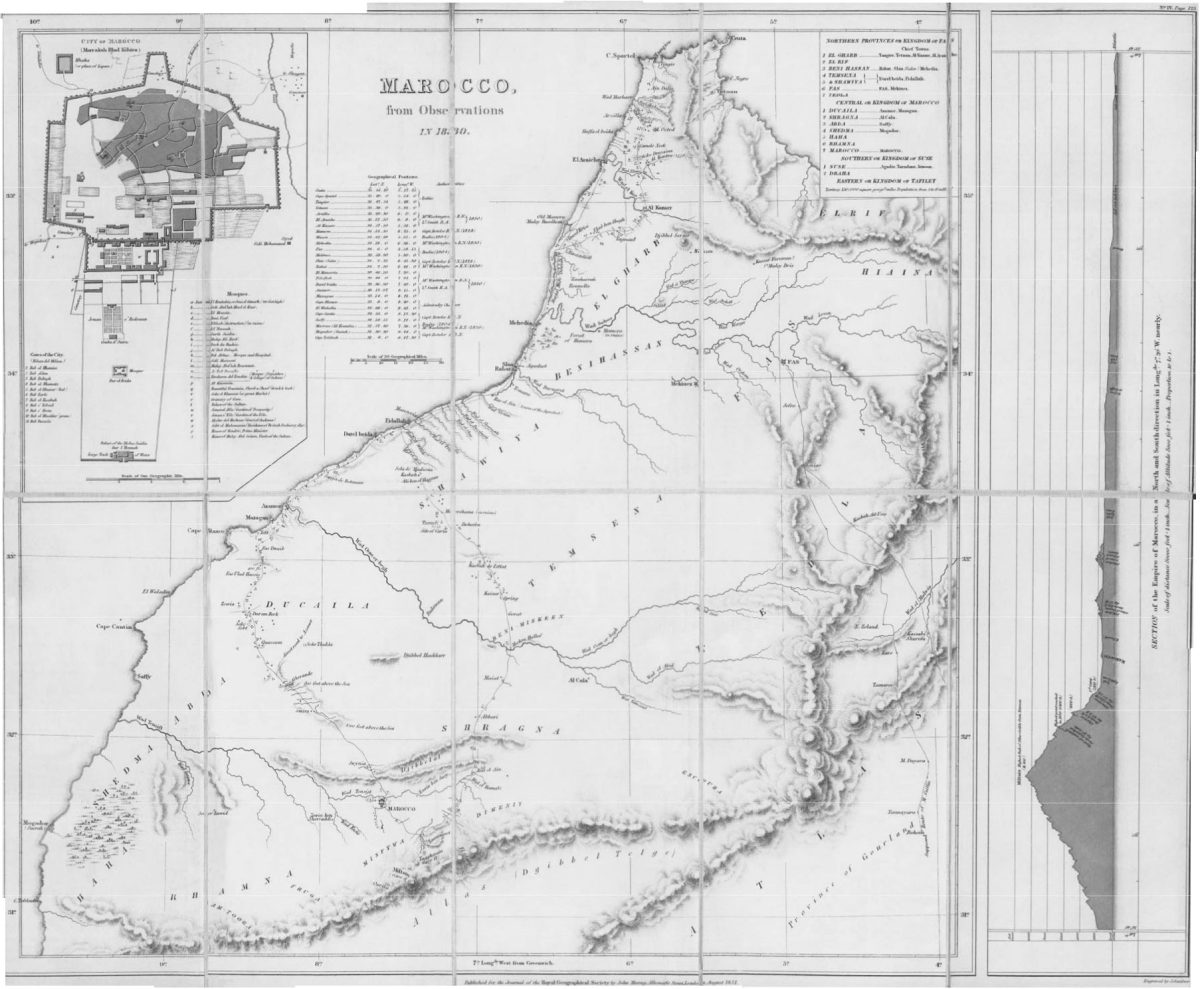
The party left Tangier on 1st November 1829 and, after crossing the Atlas Mountains, arrived at Marrocco (now Marrakesh) in late December, returning to Tangier in early February 1830. Today, this journey of about 350 miles would take, perhaps, eight hours by car. Washington produced a full account of the journey detailing local populations, for some reason the number of Jews was included as well as gun emplacements, defences, terrain and so on.
He also made many astronomical observations to correct the existing maps as well as measuring the height of the peaks of the Atlas Mountains and plateaus around, estimates for which were wildly inaccurate. For example, the height of the mountains had been given as similar to Mount Everest. He corrected discrepancies in the positions of several places in error by several miles. As he was also a linguist, he made comparisons of the different dialects that he encountered.

All this material was written up as a paper and a new map of Morocco15Washington, Lieutenant. ‘Geographical Notice of the Empire of Marocco’. The Journal of the Royal Geographical Society of London (1831 which he presented to the Royal Geographic Society on 25th April 1831 and published in the inaugural edition of the Society’s Journal.
The later letters of Joseph Hooker (the botanist of Kew Gardens fame), who repeated part of the journey in the 1870s, show that this was a gruelling exploratory expedition over rough terrain and climbing mountains. Hooker was a hardened traveller having been on the Ross Antarctic expedition16 Hooker’s letters. . Hooker, a great friend of Charles Darwin, was to be a companion to Washington on his 1860 Palestine trip.
Flag Lieutenant
In August 1830 Washington was promoted to Flag Lieutenant to Sir John Poo Beresford, Commander in Chief Nore, on HMS Royal George (120 guns) and followed him to HMS Ocean until promoted to Commander in 1833.
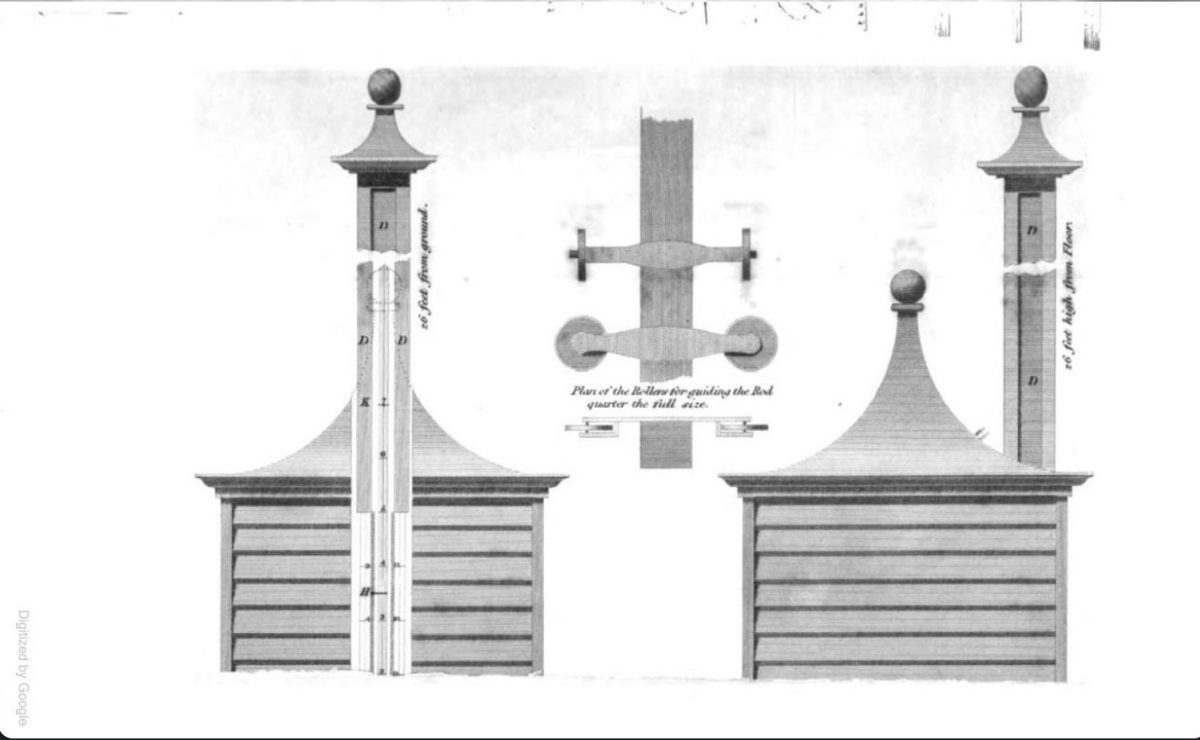
During this period there does not appear to be any sea time. Whilst based at Sheerness, he sketched and described a new automatic tide gauge that had been installed. This appeared in the first edition of the Nautical Magazine17Nautical Magazine Oct 1832, Tide Gauge article by Washington .
Marriage
Now thirty-three years old, Washington married his first cousin, Elenora Askew and within a year, by then living in Florence, she bore their first son, George, who was destined for the Church. As he had been promoted just before this he must have been doing something fairly important in Florence. Perhaps this was diplomatic or intelligence work since this was a turbulent time in the history of the region.
Then, back in England, son George was followed by a daughter and, in 1839, another son Henry. Another daughter and a son, Francis, was born in 1843.
Men of science
There was a group of men, led by John Barrow and Francis Beaufort who, using the Royal Society, Royal Geographical Society and Admiralty, were driving forward nautical science and would have been in contact with, and directing others in the field. Washington was to become part of their endeavour.
Commander and RGS Secretary

Royal Horticultural Society,
Vincent Square, London SW1
The Royal Geographic Society had been instituted five years earlier, and in May 1836 Washington, probably at the behest of Beaufort, succeeded Captain Maconochie as Secretary. Maconochie had gone to Tasmania with the new Governor, John Franklin. Washington ran the Society, edited its publications and produced directions for the expeditions being undertaken. He worked, with a single assistant, at an office in the Royal Horticultural Society in SW1.
He lived in nearby Bayswater where Elenora delivered a child for each of the next four years up to 1843, home life must have been busy.
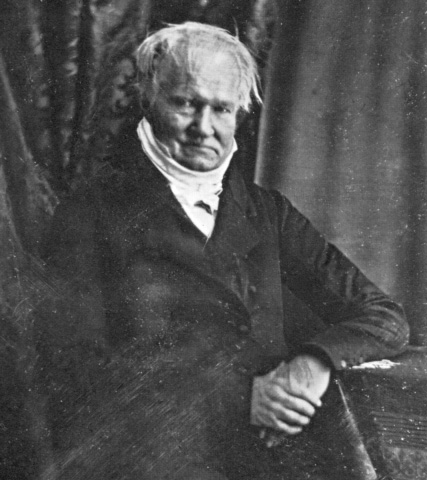
Public domain, via Wikimedia Commons
In this role, Washington would have met most key explorers, geographers and hydrographers of the era. For example, he recommended Darwin’s work to Alexander Von Humboldt and was in touch with his counterpart and friend at the Société de Géographie in France, Armand d’Avezac, influencing their work.
While Washington had been in Florence, Fitzroy had been circumnavigating with Darwin. Owen Stanley, whom we will meet later, painted the Beagle in Sydney Harbour. During Washington’s tenure at the RGS the ‘Founders Medal’ was awarded to Fitzroy.
Anti Slavery
In addition to his other duties, Washington was active in the Society for the Extinction of the Slave Trade and for the Civilization of Africa18The Society for the Extinction of the Slave Trade and for the Civilization of Africa, and was to assist David Livingstone later in his career.
Washington demonstrated his standing as a Nautical Astronomer in his reviews of books such as Raper’s ‘The Practice of Navigation and Nautical Astronomy’19Washington, Captain. Review of Review of The Practice of Navigation and Nautical Astronomy, by H. Raper. The Journal of the Royal Geographical Society of London 10 (1840): 568–70. . Its author, Henry Raper had been awarded the Silver Medal at the Naval College a year or so before Washington’s Gold so they would have been known to each other.
Another son, Henry, was born in 1839: he was to follow in his father’s footsteps and eventually became a Royal Navy Captain.
The Hydrographic Office
In the mid nineteenth century, there were serious issues: charts were often inaccurate and outdated; newer, iron steamships suffered terribly from the problem of compass deviation; loss of life and shipping were at levels that would be inconceivable today. Much needed to be done and Francis Beaufort, the Admiralty Hydrographer, had this task in hand for the World in general and the North Sea in particular.
Shipwreck and Back to Sea
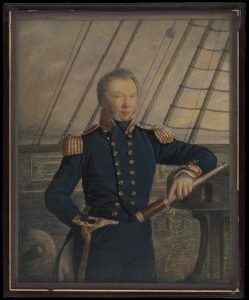
lost in the ‘Fairy’ on a survey of
North Sea, 1840. Credit: National Maritime Museum, Greenwich, London
Robert Fitzroy’s weather forecasts were still twenty years away. It was a bright November day in 1840 as, Commander William Hewett, protégé of Beaufort and friend of Washington, sailed from Harwich in HMS Fairy (another Cherokee class ‘coffin brig’) to work on the North Sea survey. The Great Gale blew: there were many shipwrecks20List of shipwrecks in November 1840 [/mfn,] Searches were made but it was a tragic tale: all hands were lost, including Captain Hewett’s son and brother-in-law, which must have been devastating for his wife who was left with several small children20Loss of HMS Fairy, 1840 .
For Washington, however, this was a wind of change and on 16 March 1841, he was back to sea in HMS Shearwater in charge of the North Sea survey. This ship, originally Dolphin, had been built at Harwich, as a Post Office packet, and, being a paddle steamer, was excellent for survey work. Steamers could not be windbound and could hold a given position: both of these obvious problems with sailing ships.
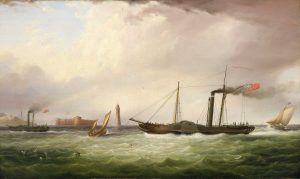
by Samuel Walters,
Public domain, via Wikimedia Commons from
Royal Museums Greenwich artwork ID: 14677
Charts and Tides
Several new charts came as a result including the 1852 Thames Estuary and East Coast. The scientific agenda was combined with surveying. As well as magnetic work there was a project to provide experimental proof of Professor Whewell’s theory of Amphidromic points. Before this, the sequence of tides in the North Sea basin was not well understood. Washington published the results of his measurements, which continued the work of the late lamented Hewett, in the Nautical Magazine in July 184221Tide Observations – North Sea – Professor Whewell’s Theory : Washington, John, 1800-1863 . William Thomson, or Lord Kelvin, was to resolve the issue of tides later in the century.

Published by James Imray
The King of Prussia
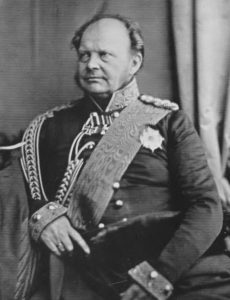
Through his Royal Geographic Society work, Washington was a friend of Alexander Von Humboldt, the German polymath, who was close to the King of Prussia.
When the paddle steamer, HMS Black Eagle, was detailed in January 1842 to convey the King from Ostend to England and back, to attend the christening of the Prince of Wales (later King Edward VII). Humboldt requested that Washington accompany the Prussian monarch. He made an impression since the Prussian King requested the Admiralty that Washington be promoted to Captain and this duly happened on 16 March 1842.

Firebrand emerging from Grand Harbour, Valetta, Malta , 1832, by Nicolas S. Cammillieri. Public domain, via Wikimedia Commons
Captain, FRS and HMS Blazer
Around this time he became a Fellow of the Royal Society and joined the Institution of Civil Engineers as an Associate. The Civil engineering connection was related to his harbour work, and he was later remembered in the Institute’s obituary.
In early 1843 gunboat paddle steamer HMS Blazer replaced Shearwater. It has been said that the garment of the same name originated when a young Queen Victoria visited the ship causing the Captain to invent a smart jacket for his crew to impress her. This is plausible but unlikely22True Blue: A History of the Navy Blazer. See magazine.brooksbrothers.com/navy-blazer/ .
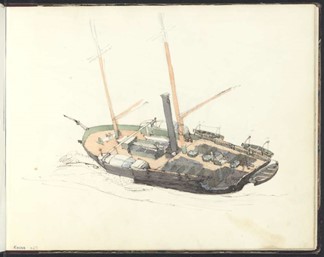
Washington’s family were living in Woolwich around this time and he had become very busy with his wider responsibilities so it is likely that Edward Killick Calver, Blazer’s Master did much of the sea work although Washington continued as Captain until May 1845. Co-incidentally another man with Harwich connections, Anthony Deane, had worked as a shipwright in Woolwich nearly two centuries before.
Saviour of Harwich Haven
Captain John Washington had taken command of the East Coast Survey in 1841 at a time of transition from sail to steam and wood to iron. Surprisingly, as the pre-eminent maritime nation, Britain had few safe havens and there was a large-scale loss of shipping on our coasts. Dealing with this became part of Washington’s responsibilities and in the first quarter of 1845 he was appointed as ‘Commissioner for Inquiring into the State of the Rivers, Shores and Harbours of the United Kingdom’.
During this period he took the initiative to resolve the problem of Harwich Haven which, without action, would cease to exist in a decade or so. It was a minor part of Washington’s work but of crucial importance to the future of the Haven.
The North West Passage
The Franklin Expedition of HMS Erebus and HMS Terror set sail from the Thames on their passage up the North Sea to seek the North West Passage.
This must have been the reason for the handover of Blazer since they needed a tow to the Orkneys and busy Washington could not be spared, he gave command of Blazer to Captain Owen Stanley who undertook the task and made some excellent sketches. This one shows Erebus leaving Scapa Flow with Blazer23Erebus sketch – the tugs may have been Monkey and Rattler as presumably Stanley was on Blazer sketching. and Rattler, which was also used to verify screw propulsion24Ratter and screw propulsion. .
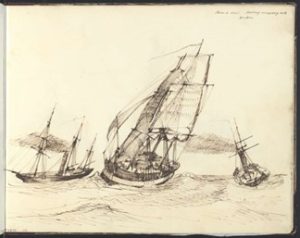
Stanley returned and produced the 1845 Deben Survey with Calver but was soon to depart to the Southern Hemisphere, never to return. His story is also worth telling.
The Eskimo Vocabulary
As a boy Washington had visited Greenland, whether he studied the Eskimo language then is uncertain but, in 1850 he published his Labrador-Eskimo and a year later the Eskimo Vocabulary for Arctic Explorers25Full text of the Greenland-Eskimo vocabulary, for the use of the Arctic expeditions. & An Eskimo Vocabulary for Arctic Explorers – good explanation here. . This was too late for the Franklin Expedition but just in time for the many rescue missions that were to be made later, some with support from Washington.
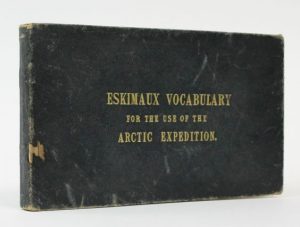
Full text of the Greenland-Eskimo vocabulary, for the use of the Arctic expeditions. & An Eskimo Vocabulary for Arctic Explorers – good explanation here.
Famine and Fisheries
Survey work was interrupted in November 1846 as HMS Blazer and other steam vessels were “sent to various ports along the Irish coast with meal to relieve the prevailing distress, which is increasing along the coast to the westward.”26HMS Blazer (pdavis.nl)
Yet another of Washington’s many tasks was an enquiry into the large fisheries on the North-East coast of Scotland27Report on the loss of life, and damage caused to fishing boats on the East Coast of Scotland, in the gale of 19th August 1848 by Captain John Washington. HistoryShelf.org (scran.ac.uk) – the full report has not yet been found. . This evolved from his Report on the State of the Harbours and Rivers of Scotland of 1846 and combined his knowledge of naval architecture and harbours. He commented:
“…that the fishing boats of the United Kingdom amount to probably 36,000 boats, manned by 150,000 men and boys, it will be admitted that this class of men deserves some consideration, and that as far as may be their small harbours should be deepened to enable them to obtain shelter in time of need, and at all states of the tide.”
His report covered boat design as well as harbours. Then, in 1849, as Washington published his Report “On the loss of life and damage to fishing-boats on the east coast of Scotland”, the Tyne lifeboat upset and drowned twenty pilots28North and South Shields Gazette 7th December 1849 .
Lifeboats
As a result the Duke of Northumberland, Admiral Algernon, offered a prize of 100 guineas for the best model of a lifeboat. In 1850, Washington issued the terms of the competition and, effectively, managed the process to achieve the best result published in his report29Report of the Committee Appointed to Examine the Life-Boat Models Submitted to Compete for the Premium Offered by His Grace the Duke of Northumberland by Great Britain. Committee Appointed to Examine Life-Boat Models .
This also included the first Wreck Map of the British Isles along with Washington’s Report. The duke became President of the, then, National Lifeboat Institution. In 1852 he joined the committee of the Royal National Institution for the Preservation of Life from Shipwreck, later the RNLI, and was instrumental in the initial publication of The Life Boat magazine in that same year as well as the architecture of life-boats30Washington and RNLI see: History of the life-boat, and its work by Richard Lewis. .
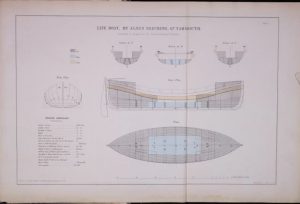
The Baltic
During 1853, he visited the Baltic nations to advise on lifeboats, he was required by the First Lord of the Admiralty, to also assess the state of the Russian Fleet and defences. Washington reported that:
On my voyage home I had the good fortune to meet the Revel division of the Baltic fleet at sea. They were sailing in two lines abreast, in close order, at about two cables length apart; it consisted of one Three decker (The Russia 120 guns), six two-deckers, and three large frigates. We passed close to them, and had a good sight of all the ships, they appeared to sail very unequally: the three-decker has all sail set before a fine fresh westerly wind, while some of the two-deckers had their topsails on the cap. They appeared to be running for Revel. I have thus seen every ship in the Baltic fleet and been enabled to count every gun that can be brought to bear on an enemies ship, at Kronstadt, Sweaborg, Revel, or Bomarsund.”
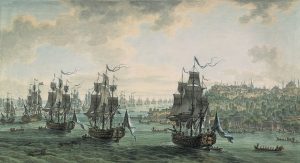
Useful information indeed.
Assistant Hydrographer
When the Crimean War with Russia, began, Washington became Beaufort’s Assistant Hydrographer. As the conflict with Russia developed Washington played a part in planning and executing the Baltic Campaign. For example, Vice Admiral Charles Napier in 1854 discussed his proposals:
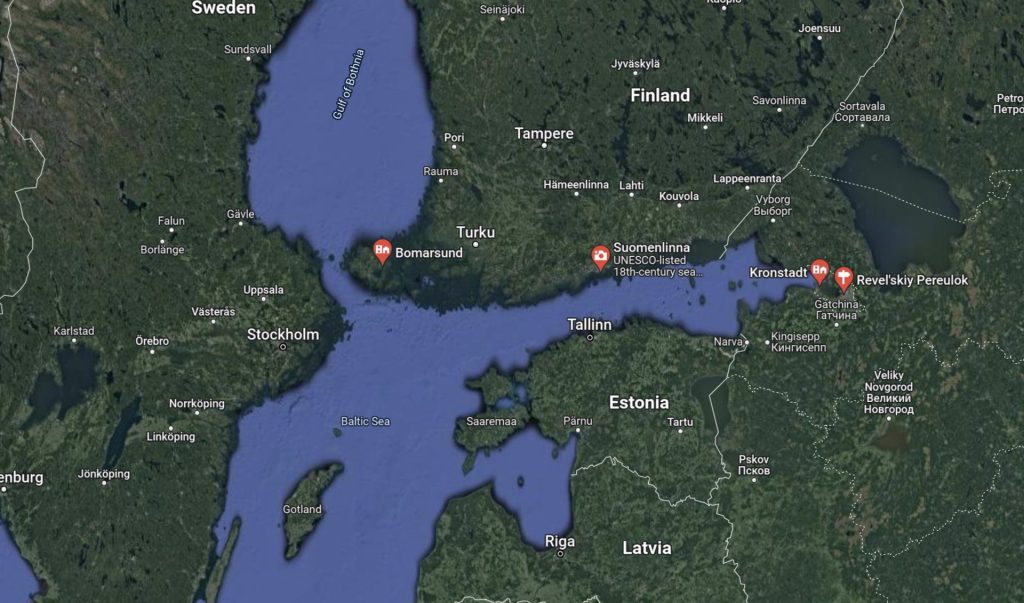
The eastern passage by my plan is 2,200 yards from the nearest fort, not 2,800, as remarked by Captain Washington. This passage is blocked up, and he proposes by means of two steam dredges to remove 15,000 tons of rubbish and stones in two days. This he calls a short time to be under the fire of the temporary batteries erected on the Islands of Bak Holmen and Sandhamn, but which he considers not likely to damage the dredgers.
Napier was not enthusiastic about this, so it is not clear if Washington’s plan was used. In that same year, his second son, Henry, a midshipman on the flagship HMS Duke of Wellington, was in a small boat action against the Russians at Sweaborg31Sweaborg is now Suomenlinna in Finland and was to receive the same commendation from his Captain as his father had over forty years earlier32Henry in action – The Russian War, 1855: Baltic – The Navy Records Society’. .
Admiralty Hydrographer
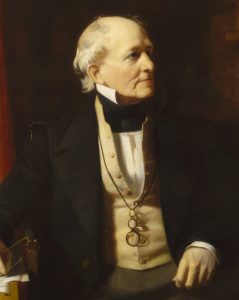
Beaufort, in post for thirty-five years, over eighty and in failing health retired, in 1855 and Washington was appointed as Hydrographer, remaining in post until death. Beaufort was a perfectionist who insisted on reviewing each chart before publication and a backlog of Charts and Sailing Directions had developed. This was an urgent task for Washington.
Furthermore, an intensification of survey work for the Australian Colonies had to be managed as well as encouraging the use of the latest Admiralty Charts by the Merchant Marine.
The Compass department, under Commander Evans, would have been very active at this time as major developments were happening. With his previous experience in magnetic work and acquaintance with George Airy33George Airy – Astronomer Royal is buried near his cottage at Playford in Suffolk, he had, at one point, been involved in the argument about longshore drift on the coast and was shown to be wrong on this. , who was also active in this field, it is likely that Washington made a contribution here as well. Airy had, incidentally, helped to establish the Prime Meridian at Greenwich in 1851, a matter of some importance for nautical charts.
Several of the Captains and Masters of the Survey fleet had served with and been trained by Washington so he knew them well. He wanted to change the class-oriented culture in the Navy, especially in the case of Masters. These men, such as William Bain and Edward Calver, and indeed Captain Cook, were highly skilled mariners, often with scientific skills, yet their careers seldom progressed because of circumstances of birth.
The energy and manner with which Washington promoted his views did not endear him to some more conservative elements in the Admiralty although, eventually, the situation did change. Francis Beaufort, himself the arch-perfectionist, accused Washington of the same trait. This, and many tasks undertaken with the lean resourcing of a department charged with surveying the seas of the World would have placed great strain on Washington.
Assisting David Livingstone
His work with the exploring community continued at the Admiralty. For example, the RGS published ‘Hints to travellers’34Raper, Henry, and Robert FitzRoy. ‘Hints to Travellers’. The Journal of the Royal Geographical Society of London 24 (1854): 328–58. by Raper and Fitzroy in 1854 which, although it does not credit him, must have had a significant contribution from Washington at some stage.
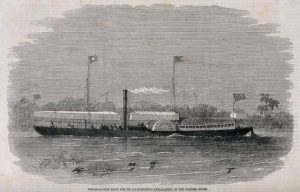
In the 1850s and early 1860s, he had extensive correspondence with the explorer David Livingstone and, amongst other help, arranged for a steamer for the Zambesi35Correspondence at Livingstone Online , supply of chronometers and other assistance. This was at a time when Washington would have been very busy with his other work.
The Cedars of Lebanon
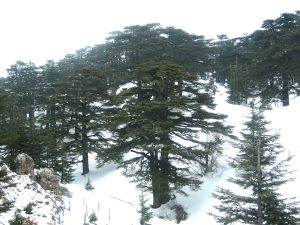
In 1860 he visited Lebanon, combining this with an inspection of the survey vessel, Firefly. The party included his son the Reverend George Washington, Dr Joseph Hooker and Firefly’s Captain Mansell. They visited the biblical Cedars of Lebanon, perhaps as a religious pilgrimage but also to fix the position by observation.
The righteous shall flourish like a palm tree, He shall grow like a cedar in Lebanon.
Psalms 92:12
Whilst in the area they verified the co-ordinates of Jerusalem and Damascus. It may be that this was done because the establishment of Longitude by telegraph had just become possible in the region. Something of a busman’s holiday for hydrographers36Dawson, Llewellyn Styles. Memoirs of Hydrography, 1885. pages 108 & 156 – “on the coast of Syria, Commander Mansell, in the Firefly, completed the survey of the coast from Iskanderun to Markab, with plans of Ruad, Tripoli, Beirut, etc. In connection with this survey. Captain Washington, R N., Commander Mansell, Dr. Joseph Hooker, the Rev. George Washington, M.A., Mr. Hanbury and Mr Gray, R.N., visited and fixed the Cedars of Lebanon”. .
Rear Admiral
At the age of fifty-nine his wife, Elenora, died in 1861: they were, by then living in Paddington. At the end of that year, Prince Albert also died. The following year Washington achieved the rank of Rear Admiral. Around this time, he was also made a Companion of the Bath which is the level below a Knighthood.
In 1863 HMS Orpheus was lost in New Zealand and the Hydrographic Office was blamed for shortcomings related to its charts. This caused Washington great distress and although he was able to show that his department was not at fault the strain of this episode brought on illness. His eldest son, George, was on a posting in Cairo and he had not seen his second son, Henry, for four years.
Despair and Exhaustion
For the last two years, Washington had been working under great pressure, had lost his wife, had not seen his sons and endured the stress of the Orpheus accusations. To recuperate he went to Le Havre, probably staying with his French friend, Armand d’Avezac.
!["Source gallica.bnf.fr / Bibliothèque nationale de France" or "Source gallica.bnf.fr / BnF".
[Marie Armand Pascal d'Avezac de Castera Macaya] / Trinquart Trinquart, Antoine-René (1814-1871). Photographe](https://eastcoastcurious.uk/wp-content/uploads/2023/03/Marie_Armand_Pascal_dAvezac_de_...Trinquart_Antoine-Rene_btv1b84531170_1-178x300.jpeg)
Trinquart, Antoine-René (1814-1871). Photographe
His son Henry now returned from suppressing the Taiping rebellion in China37W.L. Clowes on British involvement with the Taiping rebellion 1860 – 1862 , but almost was almost immediately detailed to the Pacific. Washington travelled to London to plead with the Admiralty to defer the posting but was unsuccessful so returned to France.

The History of Harwich Harbour,, H C Hughes’.
Washington sickened further: whilst on his death bed, the Admiralty, having given him only one month of sick leave, telegraphed him to ask:
“…when he would believe himself in a position to take up his duties”.
John Washington died, aged sixty-three and was given an elaborate funeral in Le Havre, where he now lays buried in the Protestant Cemetery.
Just a Buoy
He played his part as a fighting sailor, engineer, administrator and later as a strategist. The RGS was central to the exploration and description of the World and Washington was, for a time, its nerve centre. He was a navigator, surveyor, geographer, linguist, scientist, intelligence agent, humanitarian and many other things besides. He was instrumental in establishing effective ports in the UK, safer lifeboats, safer fishing boats and gave a great deal of support to Fitzroy, Franklin and others.
Perhaps he was too useful at home to go exploring like his contemporaries. Instead, he was, to a large extent, in the background supporting others such as Fitzroy. Many things would have been delayed or never have happened without him.
His only memorial, since the early 1980s, is the Starboard Hand Mark, four and a half nautical miles East of Landguard Fort in the Harwich Deep Water Channel. Washington deserves to be better remembered.

Questions
What was he doing in Florence?
Did the dredging in the Baltic occur? See Crimean War Research Society – Home (russianwar.co.uk)
Was he involved in intelligence work?
Biographies, sources
Ships and key events
Harbours
1843 Harwich Harbour by Washington, John, 1800-1863 starts pp212
1845 Harbours of Refuge report
1860 DISCUSSION. THE RIVER ORWELL AND THE PORT OF IPSWICH. (INCLUDES PLATE). (icevirtuallibrary.com) Discusses the Harwich Haven as well as Ipswich
1864 DISCUSSION. THE EAST COAST BETWEEN THE THAMES AND THE WASH ESTUARIES. (icevirtuallibrary.com) – notable for the disagreement between Redman and Airy, the Astronomer royal.
There are several brief biographies and obituaries but there should have been a book about Washington. The most personal was an address at a memorial service in France by Armand d’ Avezac. He shared many interests, was of the same age and obviously they were close friends, it is probably the most correct. The study above aims to combine, correct and put in context the available information.
- Entry in Memoirs of Hydrography Volume 2
- Armand d’ Avezac (1800-1875) – Note on the life and work of Rear Admiral John Washington, foreign correspondent of the Paris Geography Society, read in the public session of December 18, 1863 This is in French and contains the most detail.
- The United Service Magazine: Volume 3; Volume 103 – has good detail on Lifeboats work. 38The United Service Magazine: Volume 3; Volume 103Jan 1863 · H. Colburn
- Oxford National Biography – not freely available online but a reasonable summary.
- Brief summary on this site.
- Institute of Civil Engineers Obituary – he had frequent dealings with Civil Engineers and became an associate member. Date of Birth is wrong.
- A Naval Biographical Dictionary – brief and incomplete.
- A Naval Biographical Dictionary/Washington, John – as above.
- Wikipedia John Washington (Royal Navy officer) – brief and incomplete.
- Graces Guide Obituary – Date of Birth is wrong.
- Wikitree entry
- John Washington (Royal Navy officer) | Military Wiki | Fandom
More on Portsmouth Naval College The Nautical Magazine 1833 Volume 2
See Samuel Pepys for Diaries and Naval Minutes.
Footnotes
- 1His Place of birth was, according to Armand d’ Avezac, a close friend later in life, at Odiham, five miles distant. The family was living at Crondall when his father died
- 2‘British Warships in the Age of Sail 1793-1817: Design, Construction, Careers and Fates: Winfield, Rif’.
- 3
- 4
- 5
- 6
- 7‘a sink of vice and abomination, which ought to be abolished’. – Lloyd, Christopher. ‘The Royal Naval Colleges at Portsmouth and Greenwich’. The Mariner’s Mirror 52, no. 2 (1 January 1966): 145–56.
- 8Inman’s Nautical Tables, Designed for the Use of British Seamen
- 9
- 10According to Armand d’Avezac Washington was on Parthian from 1823 for two years which puts him on board, however, that is the only source.
- 11
- 12Leman & Owers Shoals – see Washington, John. Tide Observations – North Sea – Professor Whewell’s Theory, 1842.
- 13
- 14Parthian wreck – Hepper, David J. British Warship Losses in the Age of Sail, 1650-1859. Rotherfield, East Sussex, England: J. Boudriot, 1994.
- 15Washington, Lieutenant. ‘Geographical Notice of the Empire of Marocco’. The Journal of the Royal Geographical Society of London (1831
- 16
- 17Nautical Magazine Oct 1832, Tide Gauge article by Washington
- 18
- 19
- 20List of shipwrecks in November 1840 [/mfn,] Searches were made but it was a tragic tale: all hands were lost, including Captain Hewett’s son and brother-in-law, which must have been devastating for his wife who was left with several small children20Loss of HMS Fairy, 1840
- 21
- 22
- 23Erebus sketch – the tugs may have been Monkey and Rattler as presumably Stanley was on Blazer sketching.
- 24
- 25Full text of the Greenland-Eskimo vocabulary, for the use of the Arctic expeditions. & An Eskimo Vocabulary for Arctic Explorers – good explanation here.
- 26
- 27Report on the loss of life, and damage caused to fishing boats on the East Coast of Scotland, in the gale of 19th August 1848 by Captain John Washington. HistoryShelf.org (scran.ac.uk) – the full report has not yet been found.
- 28North and South Shields Gazette 7th December 1849
- 29
- 30Washington and RNLI see: History of the life-boat, and its work by Richard Lewis.
- 31Sweaborg is now Suomenlinna in Finland
- 32Henry in action – The Russian War, 1855: Baltic – The Navy Records Society’.
- 33George Airy – Astronomer Royal is buried near his cottage at Playford in Suffolk, he had, at one point, been involved in the argument about longshore drift on the coast and was shown to be wrong on this.
- 34
- 35Correspondence at Livingstone Online
- 36Dawson, Llewellyn Styles. Memoirs of Hydrography, 1885. pages 108 & 156 – “on the coast of Syria, Commander Mansell, in the Firefly, completed the survey of the coast from Iskanderun to Markab, with plans of Ruad, Tripoli, Beirut, etc. In connection with this survey. Captain Washington, R N., Commander Mansell, Dr. Joseph Hooker, the Rev. George Washington, M.A., Mr. Hanbury and Mr Gray, R.N., visited and fixed the Cedars of Lebanon”.
- 37
- 38
- 1His Place of birth was, according to Armand d’ Avezac, a close friend later in life, at Odiham, five miles distant. The family was living at Crondall when his father died
- 2‘British Warships in the Age of Sail 1793-1817: Design, Construction, Careers and Fates: Winfield, Rif’.
- 3
- 4
- 5
- 6
- 7‘a sink of vice and abomination, which ought to be abolished’. – Lloyd, Christopher. ‘The Royal Naval Colleges at Portsmouth and Greenwich’. The Mariner’s Mirror 52, no. 2 (1 January 1966): 145–56.
- 8Inman’s Nautical Tables, Designed for the Use of British Seamen
- 9
- 10According to Armand d’Avezac Washington was on Parthian from 1823 for two years which puts him on board, however, that is the only source.
- 11
- 12Leman & Owers Shoals – see Washington, John. Tide Observations – North Sea – Professor Whewell’s Theory, 1842.
- 13
- 14Parthian wreck – Hepper, David J. British Warship Losses in the Age of Sail, 1650-1859. Rotherfield, East Sussex, England: J. Boudriot, 1994.
- 15Washington, Lieutenant. ‘Geographical Notice of the Empire of Marocco’. The Journal of the Royal Geographical Society of London (1831
- 16
- 17Nautical Magazine Oct 1832, Tide Gauge article by Washington
- 18
- 19
- 20List of shipwrecks in November 1840 [/mfn,] Searches were made but it was a tragic tale: all hands were lost, including Captain Hewett’s son and brother-in-law, which must have been devastating for his wife who was left with several small children20Loss of HMS Fairy, 1840
- 21
- 22
- 23Erebus sketch – the tugs may have been Monkey and Rattler as presumably Stanley was on Blazer sketching.
- 24
- 25Full text of the Greenland-Eskimo vocabulary, for the use of the Arctic expeditions. & An Eskimo Vocabulary for Arctic Explorers – good explanation here.
- 26
- 27Report on the loss of life, and damage caused to fishing boats on the East Coast of Scotland, in the gale of 19th August 1848 by Captain John Washington. HistoryShelf.org (scran.ac.uk) – the full report has not yet been found.
- 28North and South Shields Gazette 7th December 1849
- 29
- 30Washington and RNLI see: History of the life-boat, and its work by Richard Lewis.
- 31Sweaborg is now Suomenlinna in Finland
- 32Henry in action – The Russian War, 1855: Baltic – The Navy Records Society’.
- 33George Airy – Astronomer Royal is buried near his cottage at Playford in Suffolk, he had, at one point, been involved in the argument about longshore drift on the coast and was shown to be wrong on this.
- 34
- 35Correspondence at Livingstone Online
- 36Dawson, Llewellyn Styles. Memoirs of Hydrography, 1885. pages 108 & 156 – “on the coast of Syria, Commander Mansell, in the Firefly, completed the survey of the coast from Iskanderun to Markab, with plans of Ruad, Tripoli, Beirut, etc. In connection with this survey. Captain Washington, R N., Commander Mansell, Dr. Joseph Hooker, the Rev. George Washington, M.A., Mr. Hanbury and Mr Gray, R.N., visited and fixed the Cedars of Lebanon”.
- 37
- 38
Image Credits and Sources
- The-Priory-Odiham-from-the-South-east: British History Online
- Hyde-abbey: HAMPSHIRE CULTURAL TRUST
- : Beat to Quarters
- 2017-017-01: Credit:
- USN-902794: US Naval History and Heritage Command
- Royal_Naval_Academy_Portsmouth_panoramic_view_with_an_anch_Wellcome_V0014385: Wellcome Collection | Public Domain Mark 1.0
- H.M._ship__Vengeur__in_Naples_Bay_with_the_Neapolitan_flag_at_her_main_masthead_1820_by_Nicolas_S._Cammillieri: HMS Vengeur in Naples Bay1820, by Nicolas S.Cammillieri
- Screenshot-2022-06-01-194731: Google Maps
- HM-Sloop-Parthian: Mariner's Blog
- Cotidal-lines: Co-tidal lines from Professor Whewell's 1836 paper
- Morocco-Map-combined: Royal Geographic Society
- RGS-Jounal-1: RGS Paper
- Tide-guage-paper-by-Washington: The Nautical Magazine 1832
- Royal_Horticultural_Society_Vincent_Square_London_SW1_-_geograph.org_.uk_-_740335: Photo by Kevin Gordon
- Humboldt_Alexander_von_1847: Hermann Biow, Public domain, via Wikimedia Commons
- Captain William Hewett-lost in the ‘Fairy’ on survey of North Sea, 1840. PAJ3144: National Maritime Museum, Greenwich, London
- The_Paddle_Steamer_Ariel_RMG_BHC3204-1: https://upload.wikimedia.org/wikipedia/commons/9/94/The_Paddle_Steamer_%27Ariel%27_RMG_BHC3204.jpg
- A new chart of the River Thames. With its entrances: A new chart of the River Thames - David Rumsey Historical Map Collection
- 1847 Photograph of Friedrich Wilhelm IV of Prussia(1847): wikipedia.org
- Firebrand_emerging_from_Grand_Harbour_Valetta_Malta__1832_by_Nicolas_S._Cammillieri: Public domain, via Wikimedia Commons
- Beeching-Lifeboat: Public Domain
- Marie_Armand_Pascal_dAvezac_de_…Trinquart_Antoine-Rene_btv1b84531170_1: "Source gallica.bnf.fr / Bibliothèque nationale de France" or "Source gallica.bnf.fr / BnF". | Public Domain Mark 1.0
